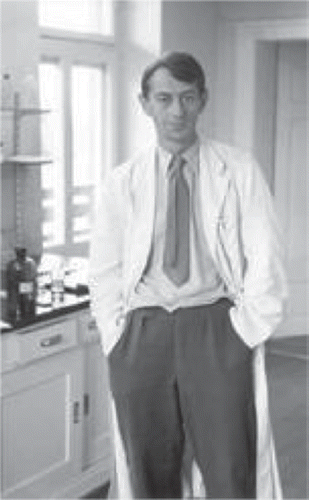The 12th Bergmeyer Conference follows a tradition initiated 22 years ago under the auspices of the International Federation of Clinical Chemistry (IFCC). It was named after the former head of research and development at Boehringer Mannheim, Hans Ulrich Bergmeyer, who retired in 1985.
Born in 1920, Hans Ulrich Bergmeyer started his career in 1946 as a young chemist in the newly founded centre for preparation of enzyme extracts in a hotel building in Tutzing, Germany. As a first task, he worked on methods to measure enzyme activities in pancreatic extracts, which were the basis for drugs against digestive dysfunctions. As more and more enzymes became measurable, he developed the theoretical basis for the production of enzymatic test kits to measure substrate and catalytic activity concentrations in human body fluids. Well-known examples are liver enzymes (called transaminases at that time) and blood glucose.
Although slowly accepted by the German and later by the international market, over the time his ideas became the basis for a large part of today's diagnostic assays and the success of the diagnostic industry world-wide. His ever growing collection of enzymes and of his knowledge on their biochemical and medical use initiated his standard reference work “Methods of Enzymatic Analysis”. It was first published in 1962 and grew over more than ten editions from one volume to twelve volumes in 1983. After the Boehringer research facilities moved to Penzberg (now Roche Diagnostics, the sponsor of the Bergmeyer Conference), they became the largest biotechnology centre in Europe.
As head of more than 200 academic professionals, he was often seen like a military officer, guiding his troops with strict discipline and clear goals. This incomparable style of leadership was accepted by all of his co-workers because of his enormous knowledge and experience. In his eyes, knowledge and research were the fundamental basis of business – an attitude, which is not always taken for granted in our days.
On Bergmeyer's retirement the Boehringer- Mannheim Company generously granted the IFCC resources to arrange a series of conferences. Bergmeyer's outspoken wish was that the general topic of the first conferences should be “Improvement of Comparability and Compatibility of Laboratory Assay Results in Life Sciences”. The reason for this choice was the experience of difficulties and problems in standardizing enzyme assays which would be even more pronounced in the, at that time, emerging immuno assays. This series of ‘IFCC Expert Conferences’ has become an appreciated and efficient format for advancement of our science and the tradition is carried on, sponsored by Roche Diagnostics under the scientific leadership of the Scientific Division of IFCC.
To conclude, a personal experience may give an example of his style. When editing the last edition of the Methods of Enzymatic Analysis, I had the honour to be a co-author of some chapters, but was somewhat delayed in delivering my texts. After some weeks he started calling me daily at the phone at 7 a.m. with kind words like “Good morning, how are you today? Wouldn't this be a nice day to finish the remaining chapter xx? ” After three more days getting this phone call in the morning the chapter was finished. He gave his comments in a few days, which had to be commented in another few days. Thus he accomplished his enormous work in a few years.
Hans Ulrich Bergmeyer received many awards and honours rewarding him for his political engagement for the freedom of research in an economy-driven world and for his prophetic views of the challenges of modern biochemistry and medicine. The “Distinguished Clinical Chemist Award” of the IFCC is just one of them. May the name of the Conference keep his liability alive.

